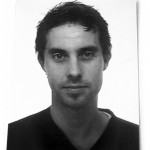
Paul Laidler
Centre For Fine Print Research, University of the West of England, Bristol
Paul.Laidler@uwe.ac.uk
www.cfpreditions.co.uk
Biography
Paul is a Research Fellow specialising in the field of digital printmaking at the Centre for Fine Print Research, UWE Bristol. The main focus of Paul’s academic activities stem from the close relationships that exist between technology, ideas and making in the visual arts – particularly in the area of digitally-mediated print and its many offshoots.
For information about Paul’s research & practice based activities please visit: http://justpressprint.blogspot.co.uk/
Exhibition
Just Press Print
The collaborative print studio has had profound impact upon the production and realisation of some of the most innovative prints within the discipline of fine art printmaking. These historical precedents have been established through mechanical modes of production and have contributed to defining the roles, expectations, functioning, production, publication, dissemination and artisanship of the collaborative print studio. Over the last 20 years we have seen new digital tools and processes such as inkjet, 3D printing and laser cutting enter the traditional domain of the collaborative print studio. These developments, have to some degree, brought in to question the role of the traditional print studio in the digital age.
In response to these technological developments the exhibition Just Press Print presents a series of digitally mediated artworks that have been initiated as part of a print editioning and publishing practice. The emphasis on digital technology within a discipline that is predicated in print seeks to explore the broadening possibilities for the graphic artefact in the digital age. Within the context of a collaborative print studio practice, the exhibition format will also include the printed matter and conversations that both inform and reveal the physical renderings of the ‘push button’ process.
Printed artworks include digital data visualisation methods such as Arthur Buxton’s inkjet printed Vogue covers series that utilises open source software to sample the five most prominent colours of the international magazine over the last 30 years. Similarly Peter Walters’s 3D printed pulsar Vela transforms astrophysical data using frequency, intensity and time to render an otherwise un-tangible three-dimensional form. Paul Coldwell’s Lines and Branches series revisits relief printing through the laser engraved matrix whilst Gordon Cheung reduces the scan data in an stl file for his decimated 3D printed bulb series.
